I love to bake bread! Ever since I was a small child, I loved the idea of living as people did in the Colonial era, growing and preparing foods from scratch, spinning, weaving, and knitting their own clothes. My love of bread baking grew over the years, and my recipes took advantage of my increasing awareness of the other grains beyond wheat in the late 1970s. As a modern dancer, I needed to maximize my nutrition and energy while minimizing my physique, so my cooking and baking depended more and more on the least processed raw materials and the most flavor-building preparation methods.
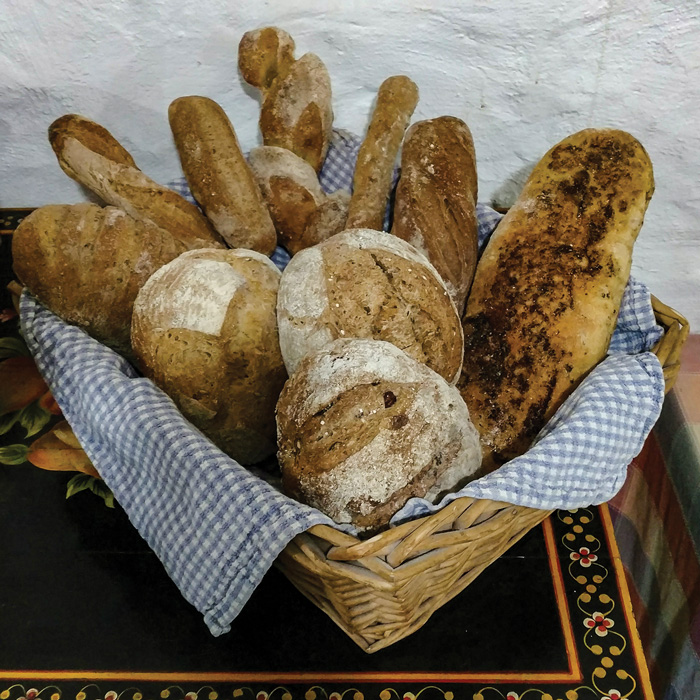
Over the years, I transitioned from prolific home baker to professional. I now run Bobolink Dairy and Bakehouse's bread operation, and I have been responsible for the production (with our fabulous staff) of millions of breads!
Baking bread is one of the more satisfying crafts, allowing us to “play” with a substance that is fun to manipulate, and you get to eat it when it’s done! I have really enjoyed teaching my monthly bread class over the last decade, helping my students to bake their first loaf, or fine tune skills of a lifetime.
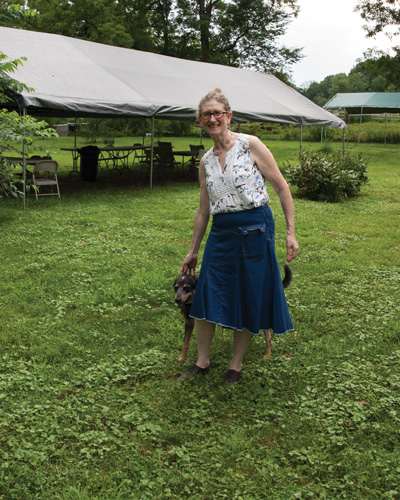
After all these years, I’m still learning, because I am continuing to explore the growing supply of heritage wheats and other grains that I can now access. Each type of grain has different amounts of protein, sugar, and bran, and each harvest of a particular type may be slightly different based on weather and location. This is the great adventure for me at this point in time, and I don’t think that I will ever tire of experimenting with different grain combinations, different fermentation times, different shapes, and different yeasts!
You’ve heard that bread is the staff of life. That saying harkens from an earlier time, when the average American ate up to entire loaf of bread per day! How can something so right and needed become such a controversial food, and how can we know which breads are OK for us to enjoy now? Here’s how…
It starts with the genetics of the grain itself. Long long ago, early hunter-gatherers collected the seeds of tall grasses. They ate those seeds, and also kept some seeds for planting in the spring. Over time, they figured out which seeds grew well, and which seeds made them feel good (or bad). As practices developed to cultivate and grow them, early human hunter-gatherers began to settle into an agricultural society, based around the growing, cooking, and storage of grain.
Fast forward to now. There is now a proliferation of literature telling us to avoid wheat altogether. And it may well be a great idea to avoid industrially produced wheat, as it can contribute to weight gain, abdominal distress, and cancer risk. But we love bread, pancakes, crackers, cookies, and cereals! And some of the gluten-free options have such complex formulations of fake ingredients that they are simply a different version of something to avoid.
Well, we are fortunate that our region is having a resurgence of small-scale heritage grain production, which includes wheat, corn, emmer, oats, rye, spelt, triticale, and rice. Currently, River Valley Community Grains is working towards gradually changing the landscape of western NJ from growing conventional commodity crops to sustainable and diverse small grain production. This group is educating landowners in the reasons why changing their cropland use is beneficial, and the not-for-profit is preparing to build a mill in the near future, so that the crops produced can be processed nearby.
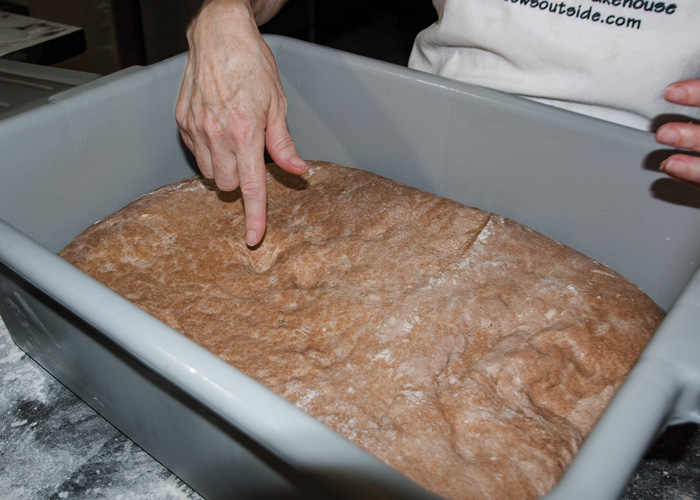
There are a growing number of businesses that produce heirloom grains in organic and regenerative agricultural systems. There are also grains available that are not heirlooms, but are bred to grow without need for chemical inputs, that have lots of nutrition and can be made into tasty, satisfying dishes that nourish the soul as well as the body. It’s more challenging to bake with these traditional grains. The natural growing methods allow these grains to thrive in seasonal variations, just as wine grapes ripen into a “vintage” which will respond to the unique conditions of a season. It is up to the baker or chef to then understand that they must be ready to “go with the flow” and celebrate the variations in their raw materials.
The great news is that the nutritious and varying flours can be baked into nutritious and varying breads, season by season, loaf by loaf. It just requires that food makers relinquish their expectation that flour be exactly the same from harvest to harvest.
Here are a few recipes from Bobolink Dairy & Bakehouse. These recipes work well with seasonally varying grains. Both of these breads are made using an autolyze, or resting period, at the beginning of the process. When the water, flour, and yeasts are left to themselves after they’ve been barely mixed, they can work together more efficiently without the salt, which slows down the good microbial activity. Also, the extended period for water absorption lets the baker use flours with varying absorption rates, so the dough is easier to manage. A textbook autolyze is done without the yeast, but over the years I have found that it works nicely with the yeast added. Just remember, slower is better. If the dough doesn’t want to stretch, give it a rest!
The recipes also have the measures in grams and ounces. Once you are in the habit of weighing your ingredients, it is much easier to work in grams. It is quite accurate, and the math is easier for increasing your batch size. If you don’t own a kitchen scale, please get one! An inexpensive digital scale with an eleven-pound capacity is useful for most home-sized kitchen projects. These recipes can be mixed by hand or in a standing mixer. I have never tried them in a food processor, so if you do and it works, please let me know!
Please read the entire recipe before beginning, and make sure that you have all of your equipment ready!
12-24 hours before you plan to mix this bread, weigh out 38 grams of whole oats groats or other whole grain, add a teaspoon of starter, and cover with water plus 2” at the top. Mix until the starter is blended, then allow to stand until ready to use. Drain the grains in a colander or sieve before adding to the dough. If you don’t have time, you can add 38 grams of oatmeal plus 16 grams of water to your dough instead.
Mix all ingredients except for the oats and salt together only until moist. Let the dough rest, covered, for 30 minutes. Add the salt, then knead the dough until elastic. Incorporate the oats, then knead the dough until elastic again. Let the dough rest for 3 hours, in an environment between 65͒°F and 80°F. If the weather is really hot, lower your water temperature accordingly, so your dough doesn’t get too active!
Form loaf as desired. Allow to rise again until the dough feels yielding to the touch. The shape that we use at Bobolink is a round boule, which is baked directly on the brick oven floor. You can place your boule on a floured or oiled baking sheet, or you can form a loaf and bake in a loaf pan.
Preheat oven to 550. Score the top of your bread, bake at 550 for 10 minutes. Throw 3 ice cubes onto the floor of your oven to create some steam when you first put your bread in the oven. After the first 10 minutes, reduce the heat to 350, bake until the center of the bread measures 205 F, approx 30 minutes.
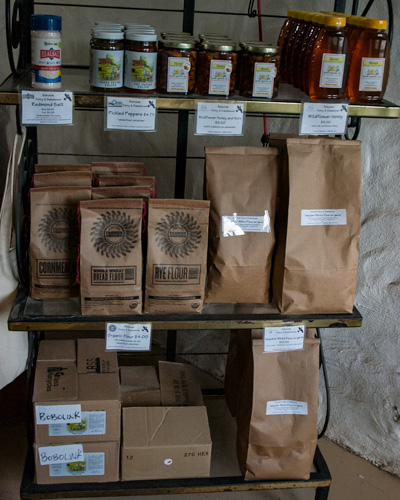
This recipe was developed for the Glenn variety of wheat that was grown at Vila Milagro Winery as part of the River Valley Community Grains project. Glenn has a lovely flavor, sweet and nutty. It is risen for 24 hours, so do be sure to plan ahead! I made the recipe for 5 baguettes because they are so delicious, you’ll want to freeze a few to have on hand. You can also use other old wheat varieties such as Wart Hog, Frederick, or Red Fife, but be forewarned that the gluten extensibility (stretchiness) will vary from harvest to harvest. The difference in your end product? If there is less extensibility, your bread may be denser. Yum. If there is more extensibility, your bread may be lighter. Yum. You can’t go wrong.
Mix the water, flour, and yeast until just blended. Allow to rest for 30 minutes. Add the salt, then mix well. Knead the dough until elastic. This dough will not be as stretchy, so just coax it to stretch, until it tells you, “I’m done”. Put in a bowl or container that will allow the dough to double, and refrigerate it covered for 24 hours.
You will want to fold this dough 3 times in the 24 hours... slide it gently out of the resting bowl onto a very lightly floured board. With lightly floured hands, fold the dough in half, just to give the gluten a nice stretch. Put it back in the bowl and back into the fridge.
After 24 hours, divide the dough into 5 equal pieces, using your scale. Form each chunk of dough into a rounded boule, and let them rest at room temperature, covered, for about 1 hour. Then stretch them into baguettes, make a shallow cut in the top of the baguettes and bake on a floured or oiled sheet pan at 550°F until browned, approximately 12 minutes.
You can buy delicious Bobolink products at the farm store or take a farm tour at 369 Stamets Road in Milford, NJ. You can also purchase on-line at their website. You might also catch them at a farm market locally or in New York City.

Delightful fantasies beyond words! Gold, Platinum & Silver Jewelry, Wildlife Photos, Crystal, Lighthouses. Perfume Bottles, Santas, Witches Balls, Oil Lamps, Paperweights, Chimes, Art Glass, Wishing Stars. Also offering jewelry and watch repair
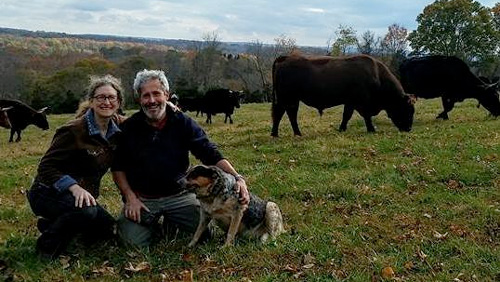
Artisanal cheeses, wood fired breads, 100% grass-fed beef, whey fed pork, and suckled veal, 100% grass-fed ice cream, pasta made with Emmer wheat and our own free-range eggs, and pesto made with our own basil! Bread and cheesemaking workshops are held on the working farm as well as weekend tours and occasional concerts.